Archives
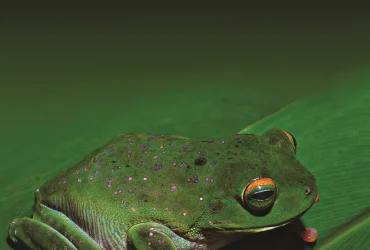 v5i2.105
v5i2.105ISSN: 1800-427X (print)
eISSN: 1800-427X (online)
DOI:10.47605/tapro.v5i2.105
Submitted date: 30 May 2013
Accepted date: 31 October 2013
Published date: 25 December 2013
Pp. 102–110.
ENVIRONMENTAL EFFECTS ON THE MORPHOLOGY OF THE SNOW TROUT Schizothorax richardsonii (GRAY, 1832)
Vandana Rajput, J.A. Johnson* & K. Sivakumar
*Corresponding author. E-mail: jaj@wii.gov.in
Abstract
This study examines the relationship between morphological traits related to body size and fin morphology and the environment in snow trout, Schizothorax richardsonii, a widespread species from the upper Ganga river basin, India. Three body shape traits (index of compression, index of trunk shape and relative body depth) and three fin traits (dorsal fin relative area, pectoral fin relative area and pectoral fin aspect ratio) were related to five environmental variables (water temperature, water flow, depth, conductivity and substrate diversity) across eight study streams. Water temperature, conductivity and substrate diversity were highly variable across the sampled sites. There was a significant negative correlation (r = -0.676) between composite morphological traits (principal components) related to body size and fin morphology. Furthermore, both body size and fin morphology were strongly correlated (r = 0.861 and r = -0.845 respectively) with composite environmental variables (water temperature, conductivity and substrate diversity) across sites. These findings suggest that the morphological traits of fish populations residing across environmental gradients are adapted to different habitats.
Key words : Schizothorax richardsonii, ecomorphology, environmental variables, Ganga River
Section Editor: Sandra Binning
eISSN: 1800-427X (online)
DOI:10.47605/tapro.v5i2.105
Submitted date: 30 May 2013
Accepted date: 31 October 2013
Published date: 25 December 2013
Pp. 102–110.
ENVIRONMENTAL EFFECTS ON THE MORPHOLOGY OF THE SNOW TROUT Schizothorax richardsonii (GRAY, 1832)
Vandana Rajput, J.A. Johnson* & K. Sivakumar
*Corresponding author. E-mail: jaj@wii.gov.in
Abstract
This study examines the relationship between morphological traits related to body size and fin morphology and the environment in snow trout, Schizothorax richardsonii, a widespread species from the upper Ganga river basin, India. Three body shape traits (index of compression, index of trunk shape and relative body depth) and three fin traits (dorsal fin relative area, pectoral fin relative area and pectoral fin aspect ratio) were related to five environmental variables (water temperature, water flow, depth, conductivity and substrate diversity) across eight study streams. Water temperature, conductivity and substrate diversity were highly variable across the sampled sites. There was a significant negative correlation (r = -0.676) between composite morphological traits (principal components) related to body size and fin morphology. Furthermore, both body size and fin morphology were strongly correlated (r = 0.861 and r = -0.845 respectively) with composite environmental variables (water temperature, conductivity and substrate diversity) across sites. These findings suggest that the morphological traits of fish populations residing across environmental gradients are adapted to different habitats.
Key words : Schizothorax richardsonii, ecomorphology, environmental variables, Ganga River
Section Editor: Sandra Binning
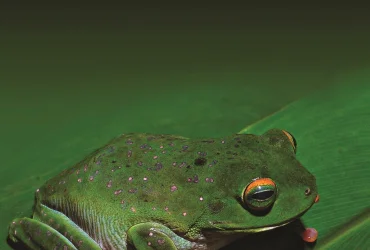 v5i2.104
v5i2.104ISSN: 1800-427X (print)
eISSN: 1800-427X (online)
DOI:10.47605/tapro.v5i2.104
Published date: 25 December 2013
Pp. 99–101
EDITORIAL : Tradition for Better or Worse
James L. Reveal*
*Section Editor: Taprobanica, the journal of Asian Biodiversity
For many a young person there is nothing worse than a grumpy old curmudgeon with opinions steeped in tradition and a “we have always done it that way” attitude.
Call me guilty.
Now in my seventh decade of life with some fifty years of experience writing botanical papers I bring a modicum of experience to the subject, and being one of the “old school” the baggage includes a lot of established tradition that dates back centuries. This is not to say that I am laboring on this editorial on an old manual typewriter with a faded ribbon, technology is something all of us embrace for it often saves time and resources. Rather, I am talking about the traditions established by botanists on how information is presented when written. Again, I am not suggesting publications should only be in the form of a hard copy, quite the contrary as I am a firm supporter of electronic publication.
eISSN: 1800-427X (online)
DOI:10.47605/tapro.v5i2.104
Published date: 25 December 2013
Pp. 99–101
EDITORIAL : Tradition for Better or Worse
James L. Reveal*
*Section Editor: Taprobanica, the journal of Asian Biodiversity
For many a young person there is nothing worse than a grumpy old curmudgeon with opinions steeped in tradition and a “we have always done it that way” attitude.
Call me guilty.
Now in my seventh decade of life with some fifty years of experience writing botanical papers I bring a modicum of experience to the subject, and being one of the “old school” the baggage includes a lot of established tradition that dates back centuries. This is not to say that I am laboring on this editorial on an old manual typewriter with a faded ribbon, technology is something all of us embrace for it often saves time and resources. Rather, I am talking about the traditions established by botanists on how information is presented when written. Again, I am not suggesting publications should only be in the form of a hard copy, quite the contrary as I am a firm supporter of electronic publication.
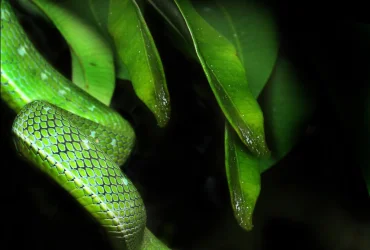 v11i2.293
v11i2.293ISSN: 1800-427X (printed)
eISSN: 1800-427X (online)
DOI:10.47605/tapro.v11i2.293
Submitted date: 28 March 2022
Accepted date: 16 November 2022
Published date: 22 November 2022
Pp. 119–121.
Seaweed (macroalgae) diversity on the Dikwella coast, Southern Sri Lanka
M.L.I. De Silva*, M.S. Gunasinghe, P.H. Liyanagedara, M.A.S. Ranjula, H.M.S.M Herath, N. I. Bamunuarachchi & W.A.A.D.L Wickramasinghe
*Corresponding author. E-mail: ninelawlis1@gmail.com
Seaweeds are photosynthetic and macroscopic eukaryotic organisms found in marine and brackish water environments. They are one of the major primary producers in marine ecosystems. They are also important in maintaining coastal biodiversity by interacting with other organisms. In addition to their biological and ecological importance, seaweeds are economically significant. Data from the Food and Agriculture Organization (FAO) shows that a total of 35 million tonnes of seaweed were produced through cultivation in 2019 and 97% of this was from East Asia. China was ranked as the top producer. In contrast to all the positives, there are a few negative impacts of seaweeds; including biofouling, habitat invasion, and unwanted beach drift.
Section Editor: H.K.S de Zoysa
eISSN: 1800-427X (online)
DOI:10.47605/tapro.v11i2.293
Submitted date: 28 March 2022
Accepted date: 16 November 2022
Published date: 22 November 2022
Pp. 119–121.
Seaweed (macroalgae) diversity on the Dikwella coast, Southern Sri Lanka
M.L.I. De Silva*, M.S. Gunasinghe, P.H. Liyanagedara, M.A.S. Ranjula, H.M.S.M Herath, N. I. Bamunuarachchi & W.A.A.D.L Wickramasinghe
*Corresponding author. E-mail: ninelawlis1@gmail.com
Seaweeds are photosynthetic and macroscopic eukaryotic organisms found in marine and brackish water environments. They are one of the major primary producers in marine ecosystems. They are also important in maintaining coastal biodiversity by interacting with other organisms. In addition to their biological and ecological importance, seaweeds are economically significant. Data from the Food and Agriculture Organization (FAO) shows that a total of 35 million tonnes of seaweed were produced through cultivation in 2019 and 97% of this was from East Asia. China was ranked as the top producer. In contrast to all the positives, there are a few negative impacts of seaweeds; including biofouling, habitat invasion, and unwanted beach drift.
Section Editor: H.K.S de Zoysa
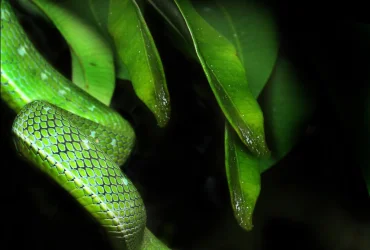 v11i2.292
v11i2.292ISSN: 1800-427X (printed)
eISSN: 1800-427X (online)
DOI:10.47605/tapro.v11i2.292
Submitted date: 30 January 2022
Accepted date: 30 October 2022
Published date: 22 November 2022
Pp. 114–118, Pls. 35–36.
On the critically endangered red teruntum mangrove (Lumnitzera littorea)
S. Madhushanka*, K.B. Ranawana & M. Prassanna
*Corresponding author. E-mail: shashimadhushanka2@gmail.com
Mangroves are ecologically important forest communities along tropical and subtropical coasts with 70 woody species belonging to about 30 genera in 20 families. Lumnitzera littorea (Jack) Voigt of the Family Combretaceae is a critically endangered true mangrove species indigenous to Sri Lanka. This species is distributed widely on the east coast of Africa, northern Australia, Polynesia, and tropical Asian countries. It is only known from a few locations in Sri Lanka. Therefore, in Sri Lanka L. littorea has been identified as a critically endangered (CR) species in 2007, 2012, and 2020 National Red Lists.
Section Editor: Jean W.H. Yong
eISSN: 1800-427X (online)
DOI:10.47605/tapro.v11i2.292
Submitted date: 30 January 2022
Accepted date: 30 October 2022
Published date: 22 November 2022
Pp. 114–118, Pls. 35–36.
On the critically endangered red teruntum mangrove (Lumnitzera littorea)
S. Madhushanka*, K.B. Ranawana & M. Prassanna
*Corresponding author. E-mail: shashimadhushanka2@gmail.com
Mangroves are ecologically important forest communities along tropical and subtropical coasts with 70 woody species belonging to about 30 genera in 20 families. Lumnitzera littorea (Jack) Voigt of the Family Combretaceae is a critically endangered true mangrove species indigenous to Sri Lanka. This species is distributed widely on the east coast of Africa, northern Australia, Polynesia, and tropical Asian countries. It is only known from a few locations in Sri Lanka. Therefore, in Sri Lanka L. littorea has been identified as a critically endangered (CR) species in 2007, 2012, and 2020 National Red Lists.
Section Editor: Jean W.H. Yong
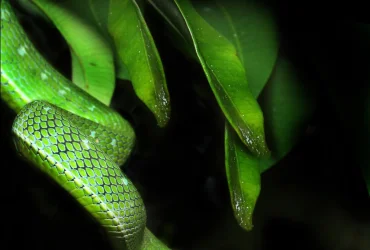 v11i2.291
v11i2.291ISSN: 1800-427X (printed)
eISSN: 1800-427X (online)
DOI:10.47605/tapro.v11i2.291
Submitted date: 9 May 2022
Accepted date: 30 October 2022
Published date: 22 November 2022
Pp. 111–113.
Scent rubbing in carnivore species at Gavier Lake, Gujarat, India
K. Trivedi*, C. Patel & A. Desai
*Corresponding author. E-mail: krunal.trivedi.7567@gmail.com
Scents are one of the most common means of animal communication. Some animals use scent communication for many purposes including determining age and sex, marking their territories, and finding mates. Scent rubbing is a poorly understood way of marking in which animals rub their bodies against a variety of surfaces, many of which have intense odours. Individuals collapse their forelegs then push forward with their hind legs, rubbing their face, neck, and back onto the destination of the scent in the most well-known occurrences among carnivores. Most commonly, they put their own scent on the object while infusing the object’s scents onto their bodies. Faeces of other animals, meat, intestinal contents and insecticide are among the substances that elicit scent-rubbing. As a result, the subject's pelages are infused with the odour of these substances. Odours produced by sweat glands, urine, faeces and vaginal secretions often induce this behaviour, which is prominent in carnivore species. They scent rub as an olfactory communication method, releasing chemical odours to increase the chances of being recognised by conspecifics. Canids and other carnivores are well known for rubbing themselves on various scents, while smaller carnivores have been shown to increase caution and alter their feeding behaviour when exposed to the scent of larger carnivores .
Section Editor: Lee Harding
eISSN: 1800-427X (online)
DOI:10.47605/tapro.v11i2.291
Submitted date: 9 May 2022
Accepted date: 30 October 2022
Published date: 22 November 2022
Pp. 111–113.
Scent rubbing in carnivore species at Gavier Lake, Gujarat, India
K. Trivedi*, C. Patel & A. Desai
*Corresponding author. E-mail: krunal.trivedi.7567@gmail.com
Scents are one of the most common means of animal communication. Some animals use scent communication for many purposes including determining age and sex, marking their territories, and finding mates. Scent rubbing is a poorly understood way of marking in which animals rub their bodies against a variety of surfaces, many of which have intense odours. Individuals collapse their forelegs then push forward with their hind legs, rubbing their face, neck, and back onto the destination of the scent in the most well-known occurrences among carnivores. Most commonly, they put their own scent on the object while infusing the object’s scents onto their bodies. Faeces of other animals, meat, intestinal contents and insecticide are among the substances that elicit scent-rubbing. As a result, the subject's pelages are infused with the odour of these substances. Odours produced by sweat glands, urine, faeces and vaginal secretions often induce this behaviour, which is prominent in carnivore species. They scent rub as an olfactory communication method, releasing chemical odours to increase the chances of being recognised by conspecifics. Canids and other carnivores are well known for rubbing themselves on various scents, while smaller carnivores have been shown to increase caution and alter their feeding behaviour when exposed to the scent of larger carnivores .
Section Editor: Lee Harding
Hubungi Kami
The ultimate aim of the journal is to provide an effective medium for communication of the latest and best scientific information.
Copyright © 2020 Taprobanica. All Rights Reserved
Jasa Pembuatan Website by IKT




